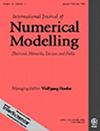QUDEN: A Matlab Package for First-Principles Quantum-Transport Engineering of 2D Material-Based Nanodevices
Abstract
The simulation of nanotransistors and the inclusion of all relevant physics is a challenging task, especially when working with one-dimensional (1D) nanomaterials in which quantum confinement strongly influences the material properties and device performance. Several groups have already developed state-of-the-art quantum transport simulators based on the first principles non-equilibrium Green's function (NEGF) formalism, and a few have been commercialized. However, these tools are computationally demanding as they require solving the NEGF and the 3D Poisson equation. Here we present an open-source quantum-transport solver for the first principles device engineering for nanoelectronics (QUDEN) implemented in Matlab. QUDEN uses NEGF and the ballistic top-of-the-barrier model to simulate ultrascaled field-effect transistors (FETs) with channels made of nanoribbons of 2D materials, while the device Hamiltonian is obtained using first principles density functional theory (DFT) in combination with maximally localized Wannier functions (MLWFs). This approach preserves the accuracy of the full NEGF-3D Poisson simulation in the on-state while using a simplified self-consistent electrostatics that leads to a much lower computational burden. Taking monolayer germanium-selenide (GeSe) nanoribbons as an example, we show that QUDEN can be used for fast screening and accurate evaluation of numerous 2D/1D materials for future FETs.

 求助内容:
求助内容: 应助结果提醒方式:
应助结果提醒方式:


